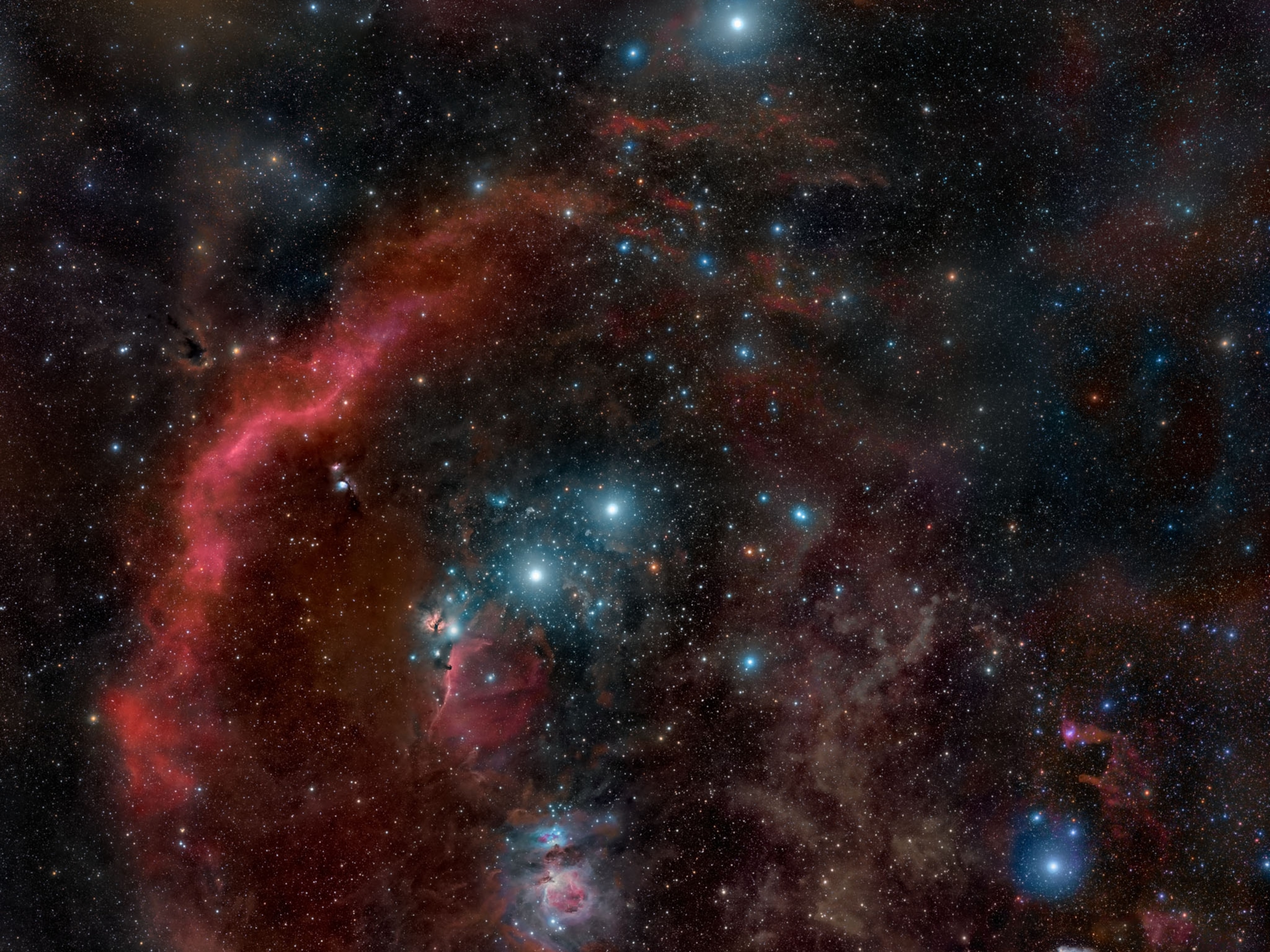
How 1.7 Billion Stars Were Mapped With Dazzling 3-D Precision
The ESA's Gaia satellite is helping astronomers understand the origins of our galaxy, one star at a time.
More than a billion twinkling stars, drifting lazily across the sky as both Earth and our home galaxy revolve, have been mapped in 3-D by the European Space Agency’s Gaia satellite. On Wednesday, scientists released a massive catalogue of data from the ambitious project, the second such information dump so far. In it are details about the wanderings of nearly 1.7 billion stars, more than seven million of which have been determined with exquisite precision.
“We’ve been waiting 20 years for this release,” says Amina Helmi of the Kapteyn Astronomical Institute at the University of Groningen.
Pinpointing the locations of stars on the sky may not seem like the most difficult task–after all, haven’t we been drawing the heavens since before writing was invented? But Gaia isn’t doing just that. It’s also making extremely precise measurements of the distances to those stars, which means that astronomers now have a treasure chest of information to open up and play with. Already, more than a dozen papers are set for publication in Astronomy & Astrophysics, astronomers are gathering at the FlatIron Institute in New York City to begin combing through the data, and teams are racing to pull nuggets of information from the data that could answer some crucial questions about the universe.
Among the stories Gaia data can tell are how the Milky Way galaxy evolved into its current configuration, how quickly the local universe is expanding, how common large planets are, whether there’s evidence for advanced extraterrestrial technologies, and what’s going on with about 14,000 asteroids in our own solar system.
My God, It’s Full of Stars! How do we know how far they are?
Launched in 2013, the Gaia satellite has been staring at the sky and multitasking like no telescope has ever done. One of its jobs is to measure the motions of stars, which astronomers can then use to geometrically determine how far away they are (the trick is getting those motions mapped with enough precision to enable the necessary mathematics, which Gaia’s keen eye can do). This data release contains the precise movements of 7 million stars in 3-D, and the 2-D motions on the sky for nearly 1.4 billion others. The team plans to release its final set of data in 2020, which will also include information about the distinct chemical signatures of those stars.
What’s this about peering into the Milky Way’s past?
As mentioned, data from Gaia will have a profound impact on what we know about stars, planets, and our galaxy. Among its more tantalizing contributions will be to the field of galactic archaeology, or using the motions and properties of stars to reconstruct the evolutionary history of our galaxy.
“In the motions of stars, there is memory retained of their origin,” Helmi explains, noting that stars moving together through space share a common past. By tracing the travels of those stellar groups, scientists can rewind time and figure out when and how many galaxy-sculpting collisions occurred.
In particular, Helmi and her colleagues are looking at stars in the galaxy’s halo–those comprising orbiting dwarf galaxies, stellar streamers, and other debris from cosmic pile-ups. Plus, the motions of those stars point to the presence and density of dark matter, the invisible substance in which our galaxy is embedded but that manages to escape direct detection.
“So we can use them, together with the globular clusters, dwarf galaxies, the streams, to figure out how dark matter is distributed in space,” she says.
What was that you said about the expanding universe?
Right. In addition to helping us understand a bit more about the galaxy we live in, the Gaia data will help scientists figure out how fast the local universe is flying apart. We’ve known since the 1990s that the rate of expansion is increasing, but the precise rate is still a bit fuzzy. Gaia will help scientists nail down a number called the Hubble constant, which is a measure of that expansion, by providing a beefy set of cosmic mile-markers that scientists can use to measure distances. For the local universe, these mile markers are Cepheid variable stars, which periodically pulse and share the same intrinsic brightness. (By comparing the observed brightness of distant Cepheids with their expected brightness, astronomers can figure out how far away they are.)
So far, astronomers have estimated those distances using data from 10 well-studied, long-period variable stars in the Milky Way. Gaia has increased that calibration sample size to more than 50, which means that teams can substantially improve their measurements of distances to local galaxies. From there, they can use Cepheids to build the next rung of the distance ladder, which relies on a particular type of stellar explosion called a Type 1a supernova that’s visible across billions of light-years.
“Establishing just how intrinsically bright Cepheids are is the key thing that Gaia will help us to achieve,” says David Jones of UC Santa Cruz. “Because we can then calibrate Cepheids and Type Ia supernovae, we have precise distances for much of the observable universe.”















